Spatial awareness Geometry Worksheets for Ages 5-6
10 filtered results
-
From - To
Discover our engaging "Spatial Awareness Geometry Worksheets for Ages 5-6," meticulously designed to enhance young learners’ understanding of shapes, sizes, and positions. These captivating activities help children develop critical spatial reasoning skills in a fun, interactive way. Perfectly tailored for early grade students, they foster important foundational skills in geometry, boosting confidence in visualizing and manipulating objects. Each worksheet includes vibrant visuals and easy-to-follow instructions, ensuring an enjoyable learning experience. Nurture your child’s spatial awareness effortlessly while they explore and learn. Start their geometric journey today and watch their skills soar!
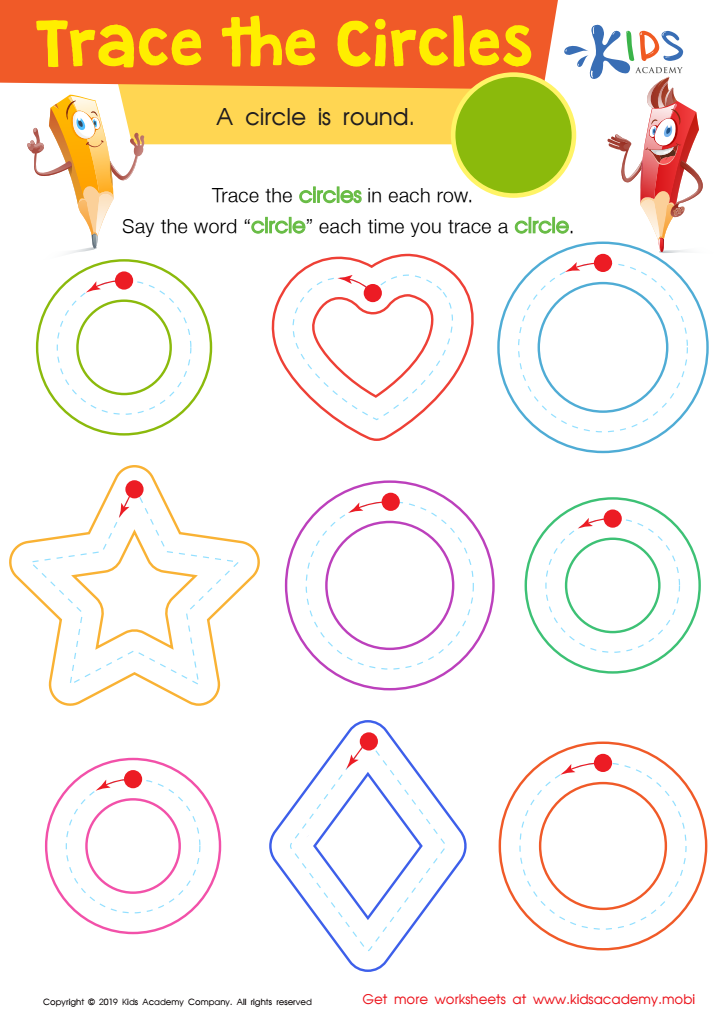

Trace The Circles Worksheet
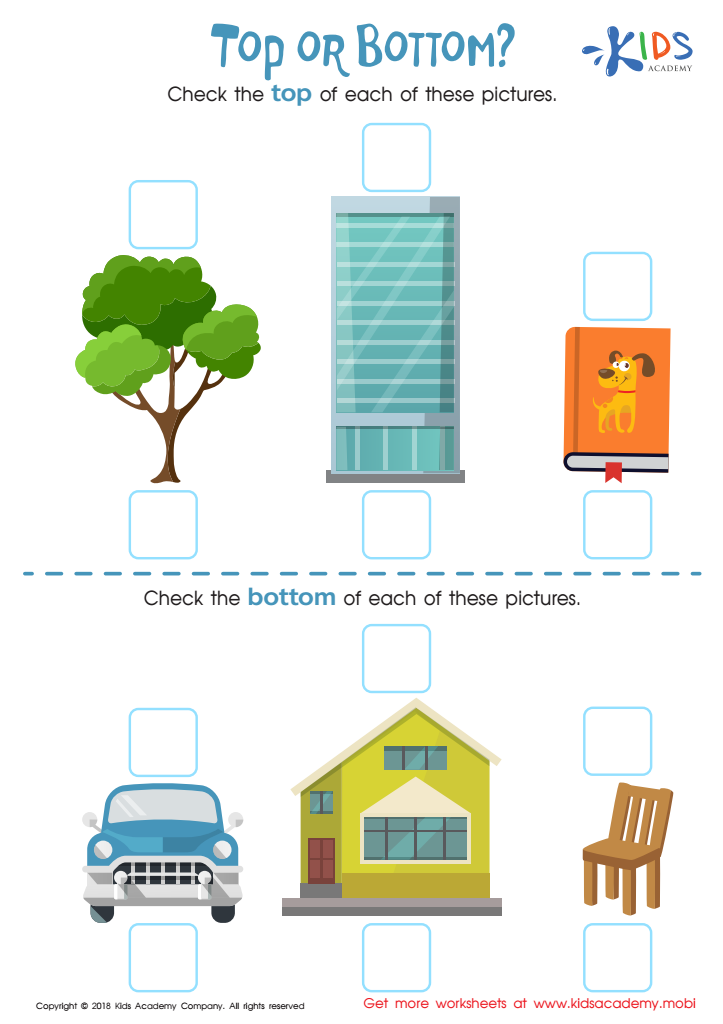

Top or Bottom Worksheet
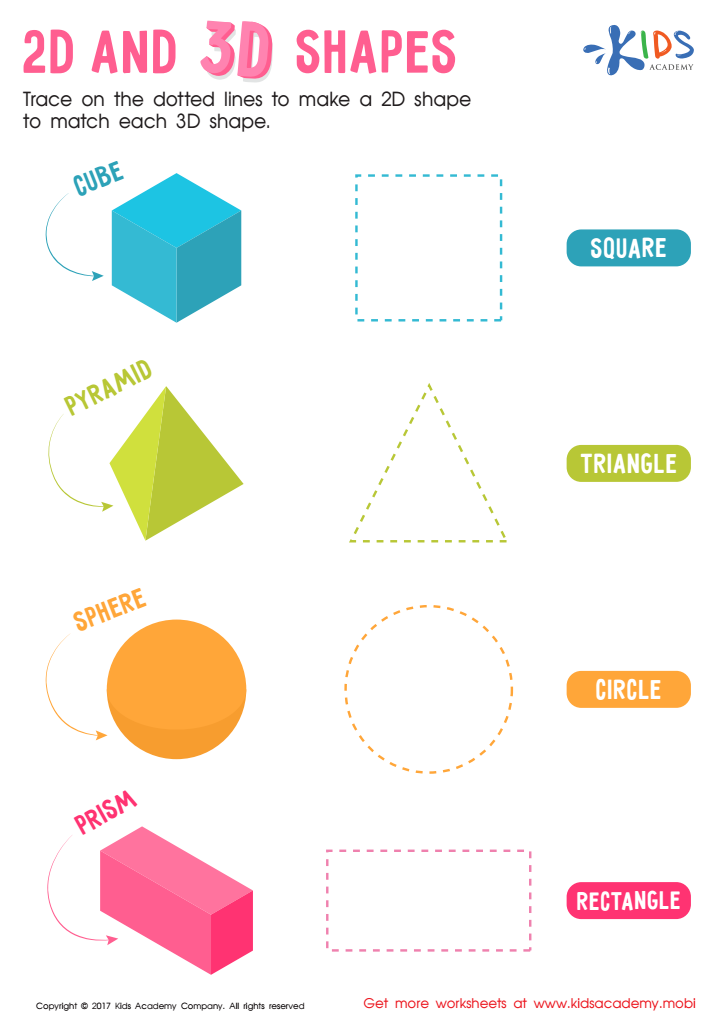

2D and 3D Shapes Worksheet
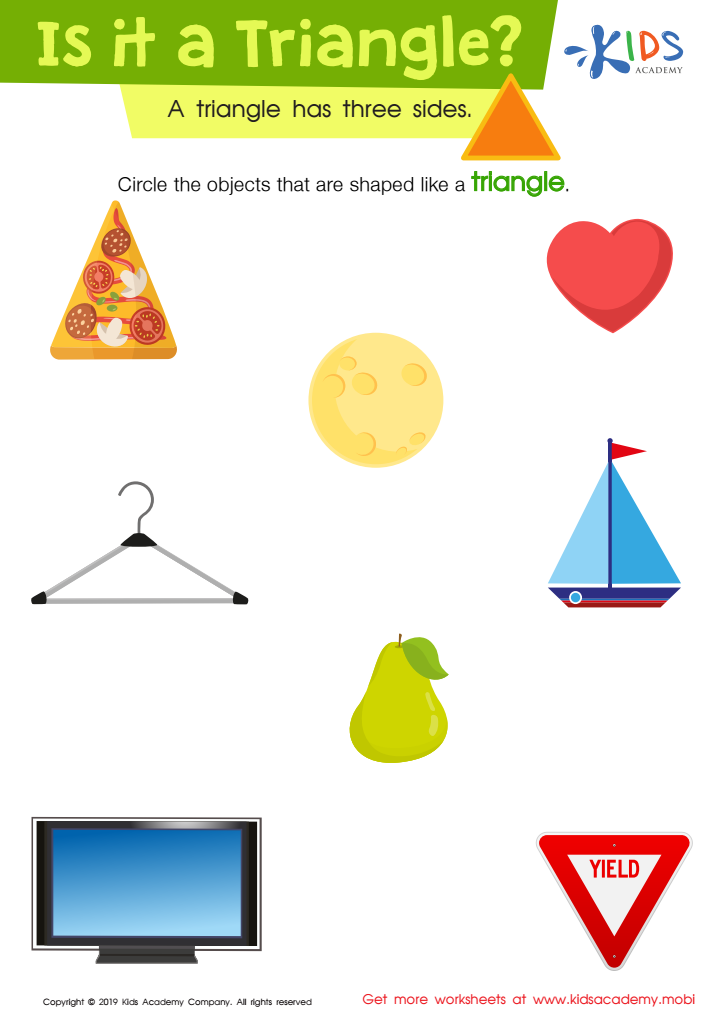

Is It a Triangle? Worksheet
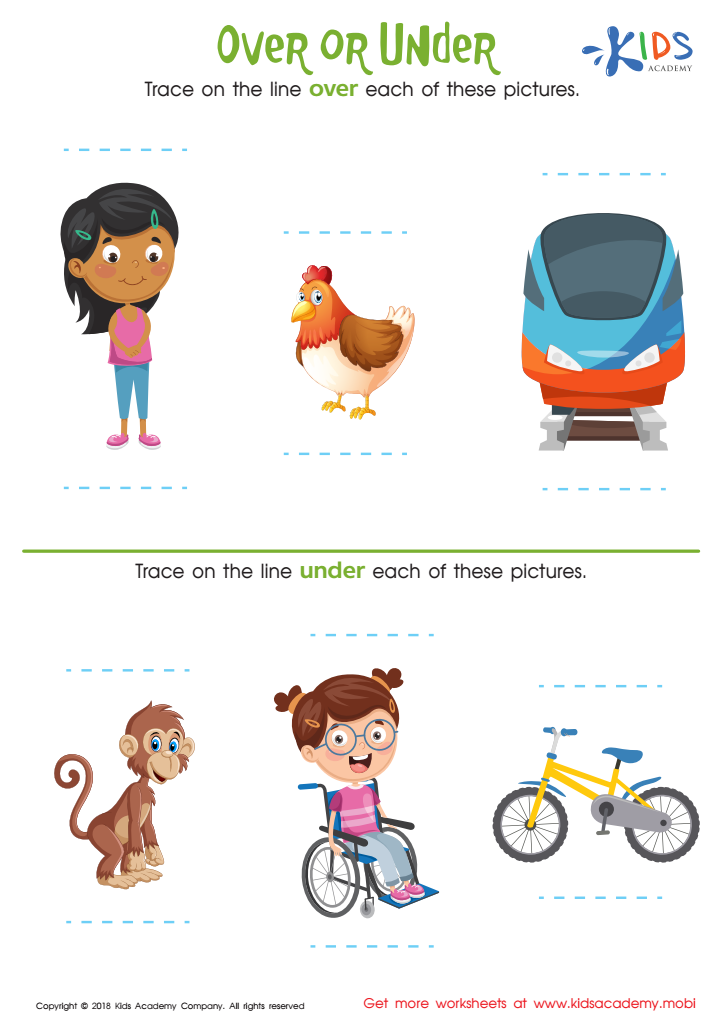

Over or Under Worksheet


Three–Dimensional Shapes: Cylinder Worksheet


In Front or Behind Worksheet
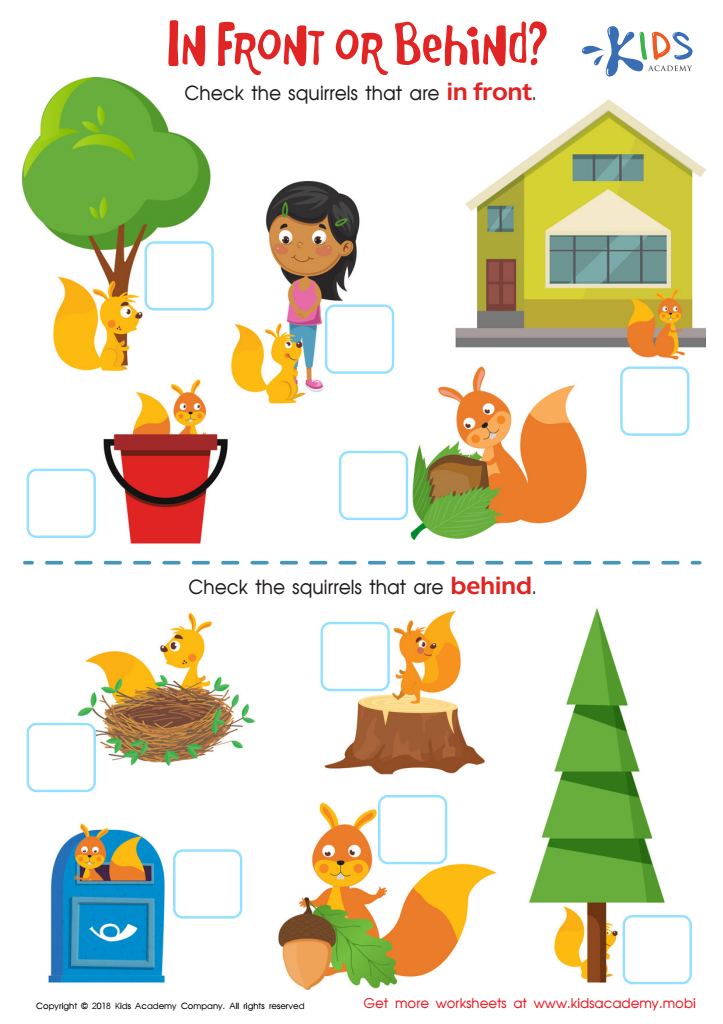

In Front or Behind: Part 2 Worksheet
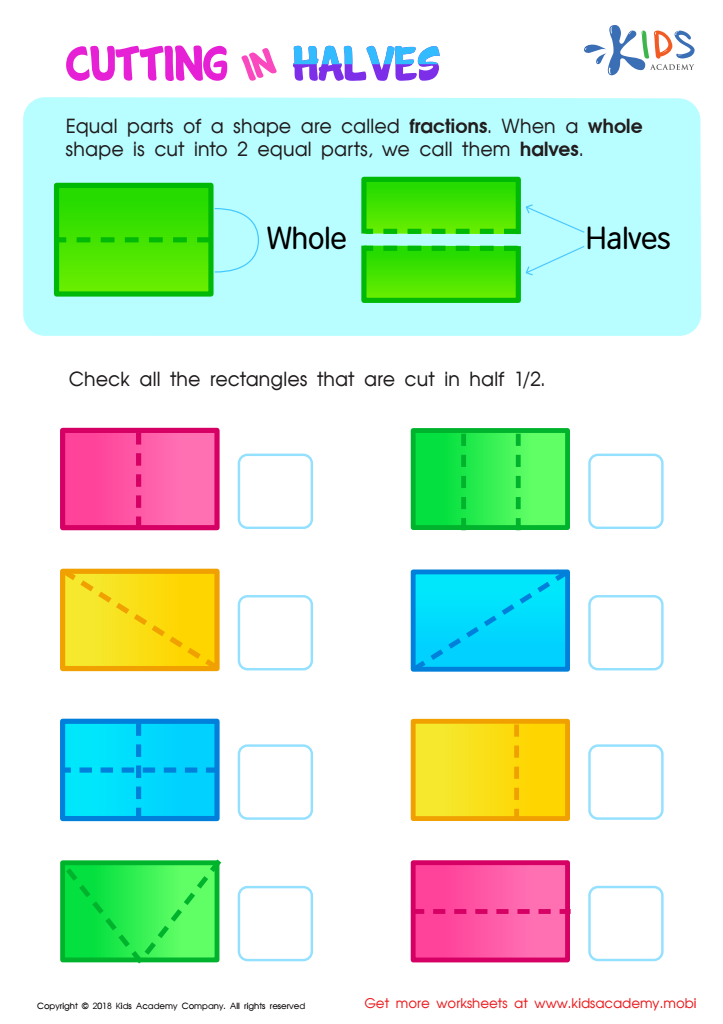

Cutting in Halves Worksheet
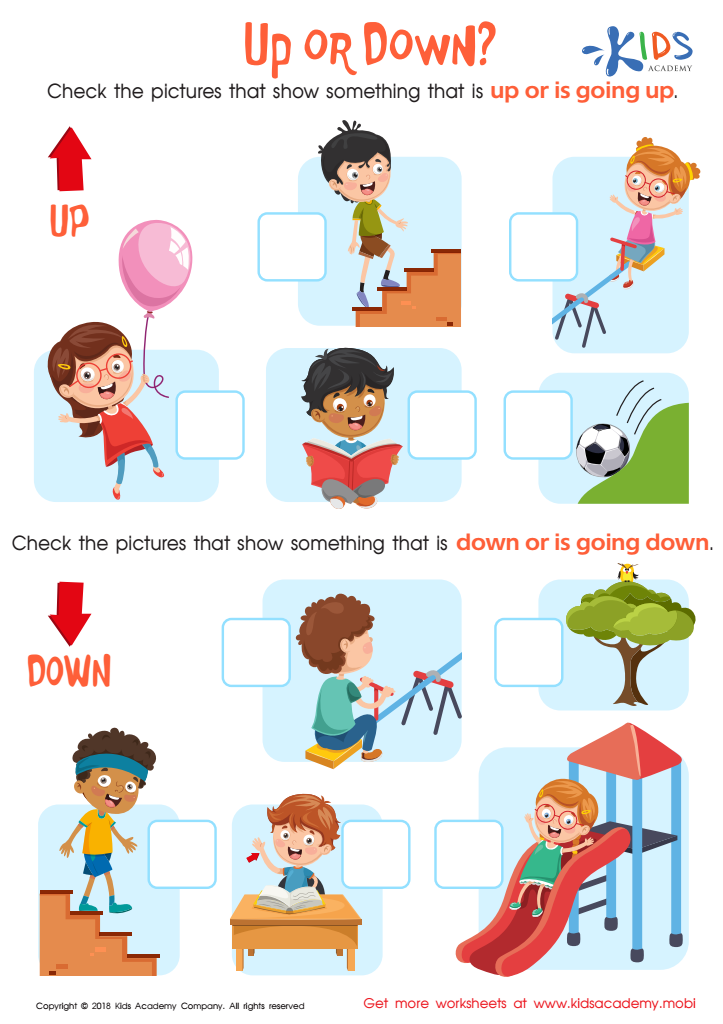

Up or Down Worksheet
Spatial awareness and geometry are foundational skills that are critical for young children, including those aged 5-6. Parents and teachers should prioritize these skills because they shape how children perceive and interact with the world around them.
Firstly, spatial awareness—the ability to understand where objects are in space relative to oneself and to each other—plays a critical role in daily activities. Activities such as getting dressed, drawing, playing sports, and even organizing toys rely on an understanding of spatial relationships.
Moreover, early geometry skills help children recognize shapes, patterns, and sizes, laying the groundwork for mathematical reasoning and problem-solving. Recognizing and manipulating shapes fosters critical thinking and reasoning, abilities that are essential for success in various subjects, including mathematics and science.
Developing spatial awareness and geometry skills also enhances language development. When children learn to describe the shape, size, and position of objects, they expand their vocabulary and improve their communication skills.
Hands-on experiences with blocks, puzzles, and drawing can make learning about these concepts fun and engaging for children. By investing time in developing these skills, parents and teachers help build a strong foundation that supports academic success and practical life skills.
 Assign to My Students
Assign to My Students






























